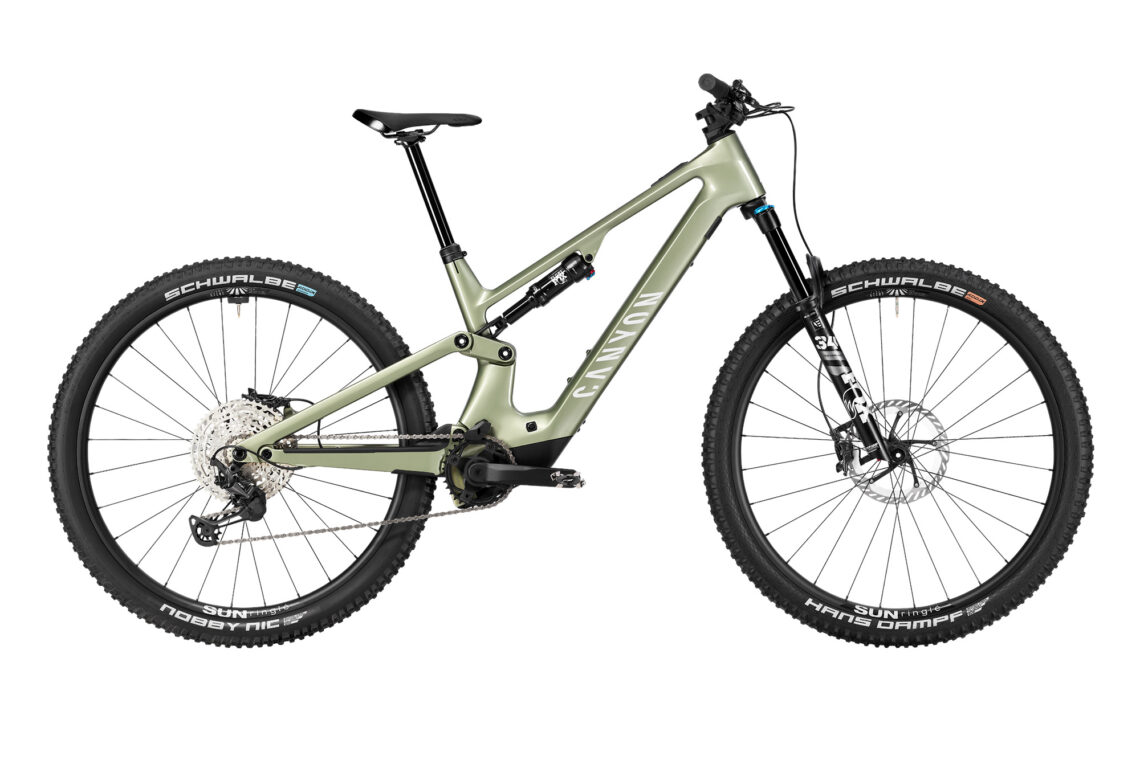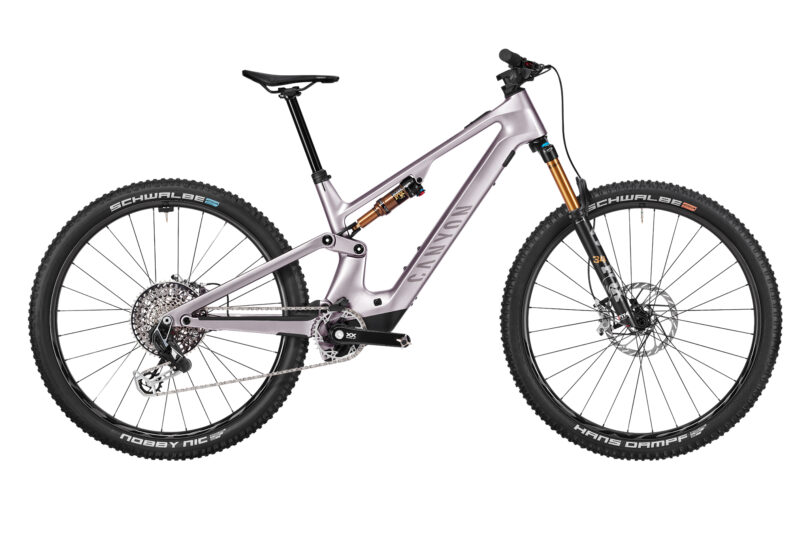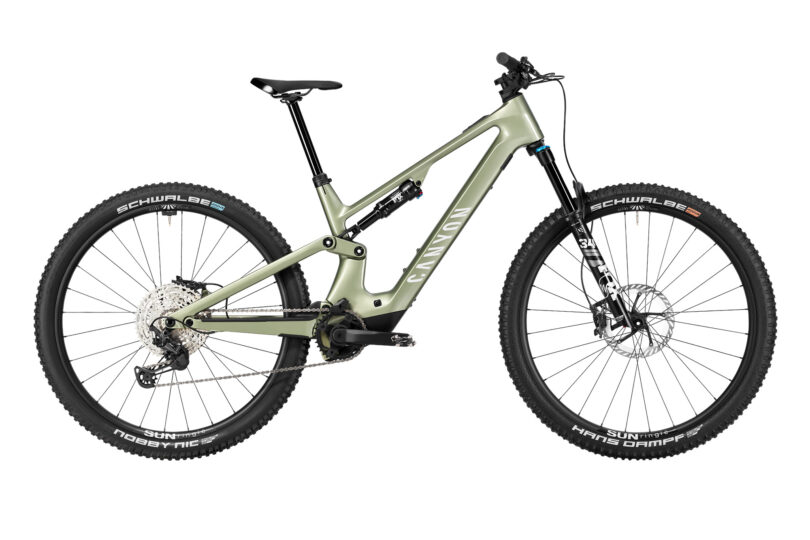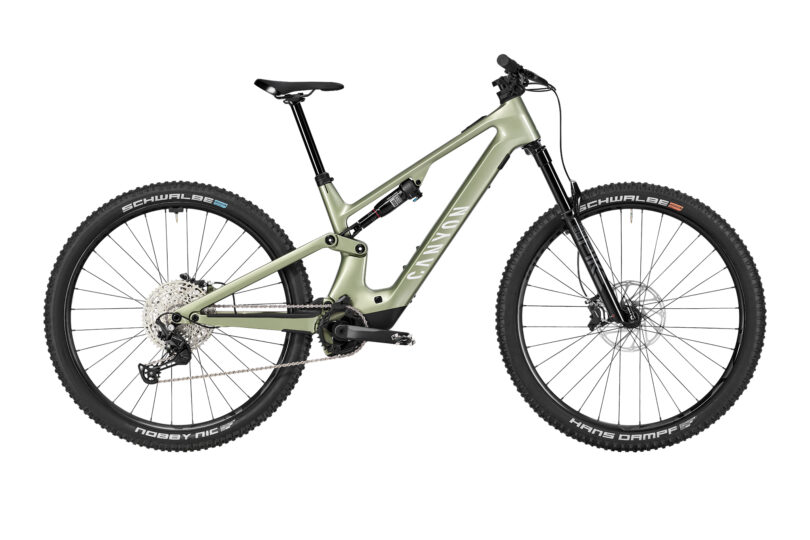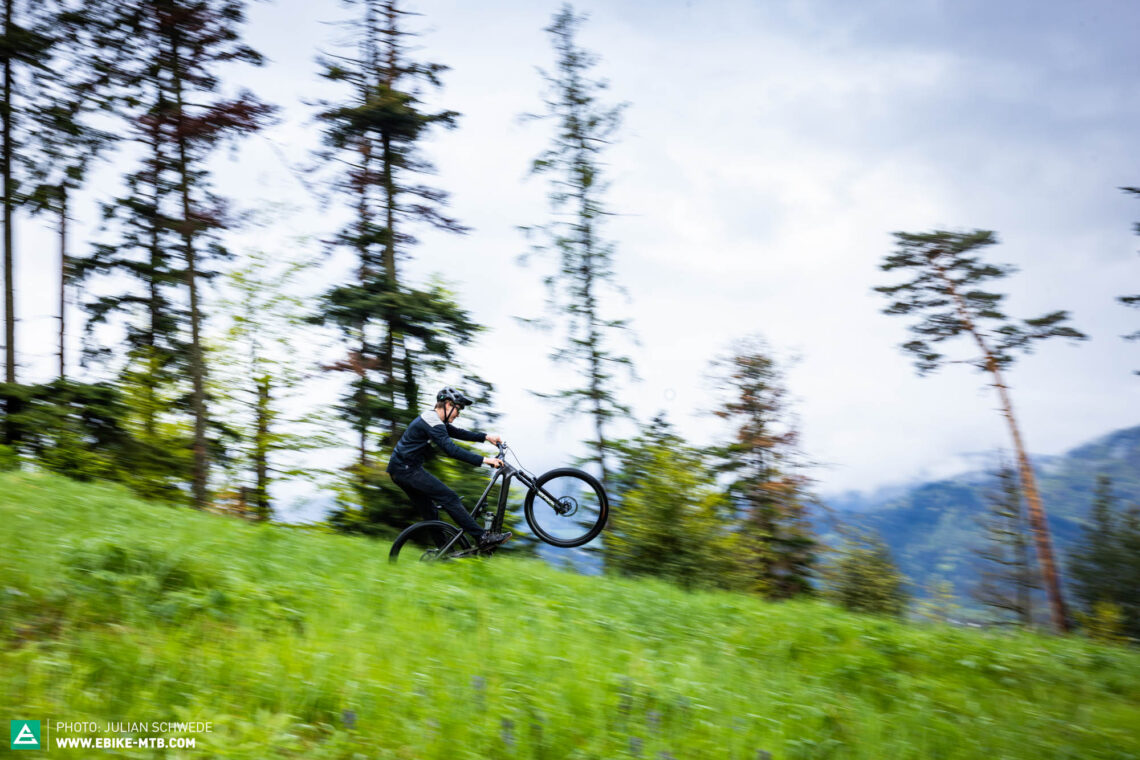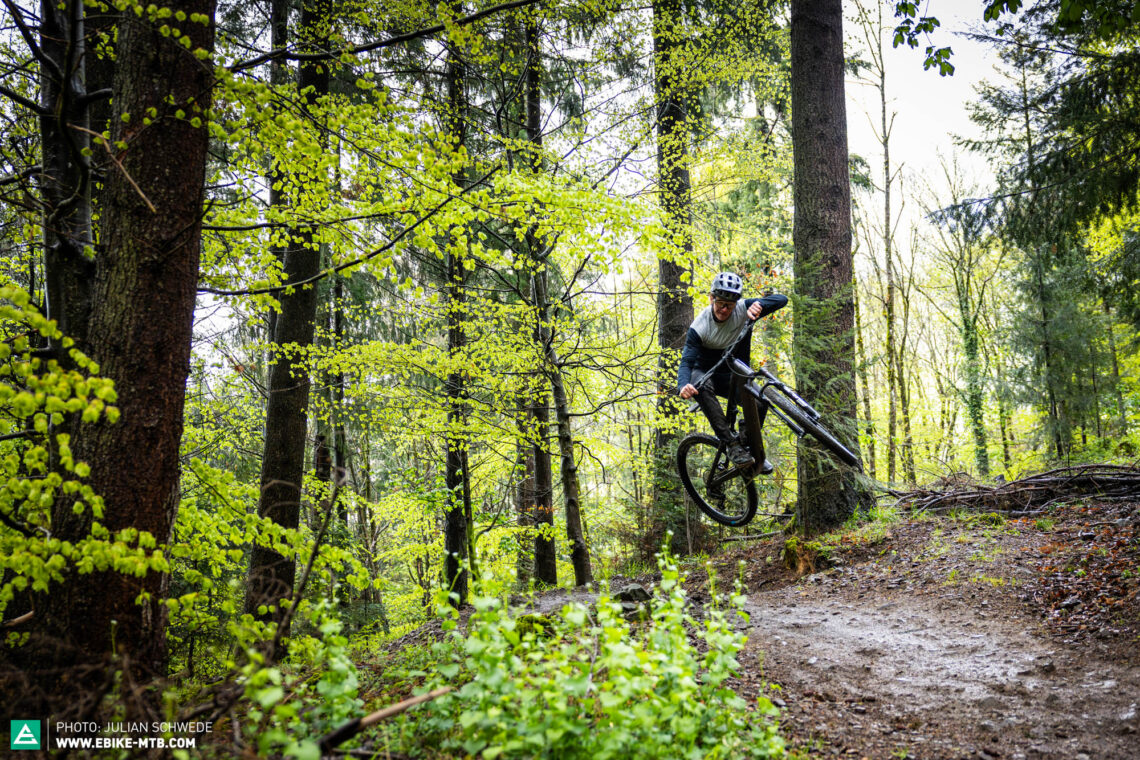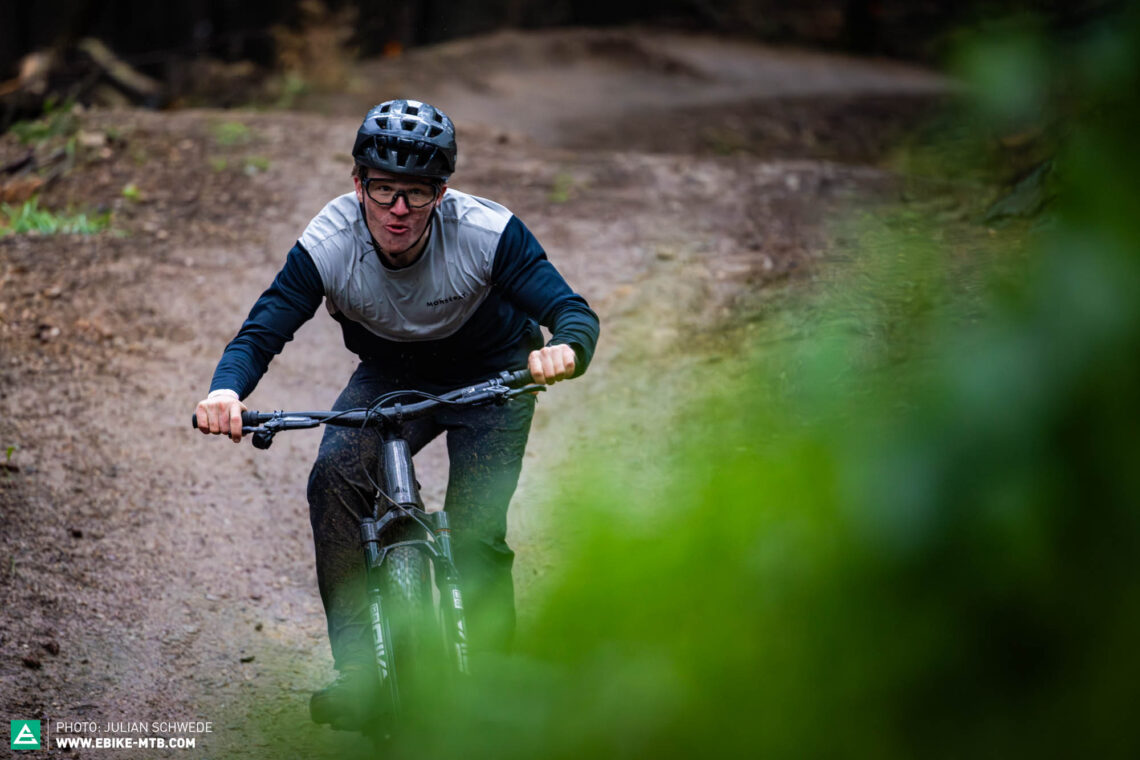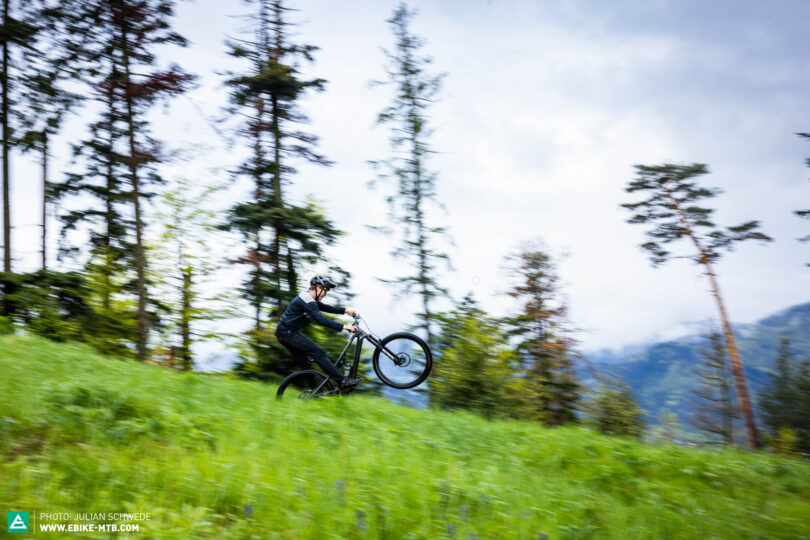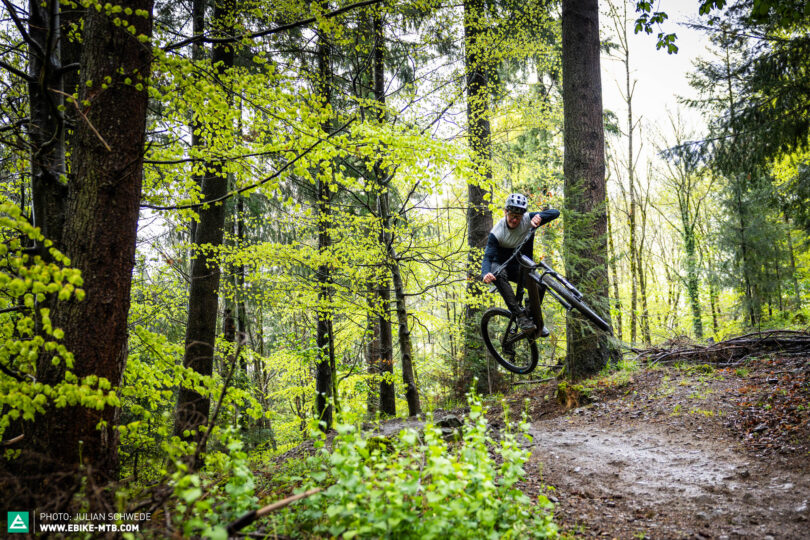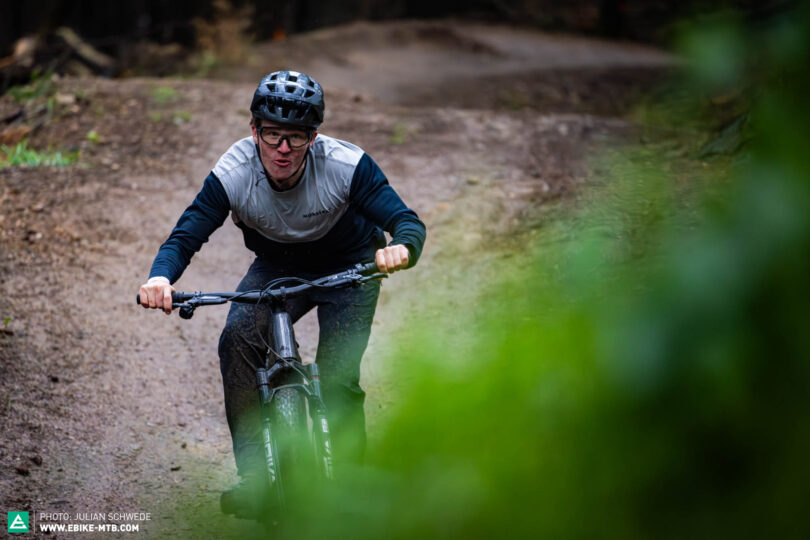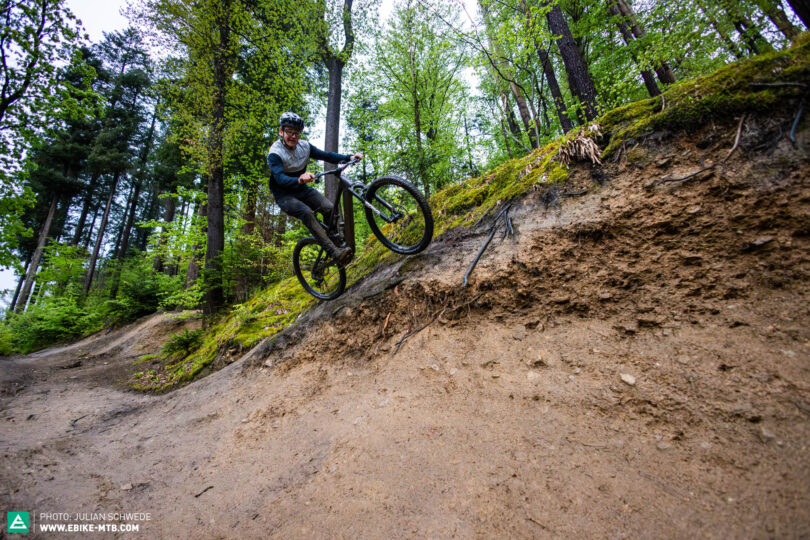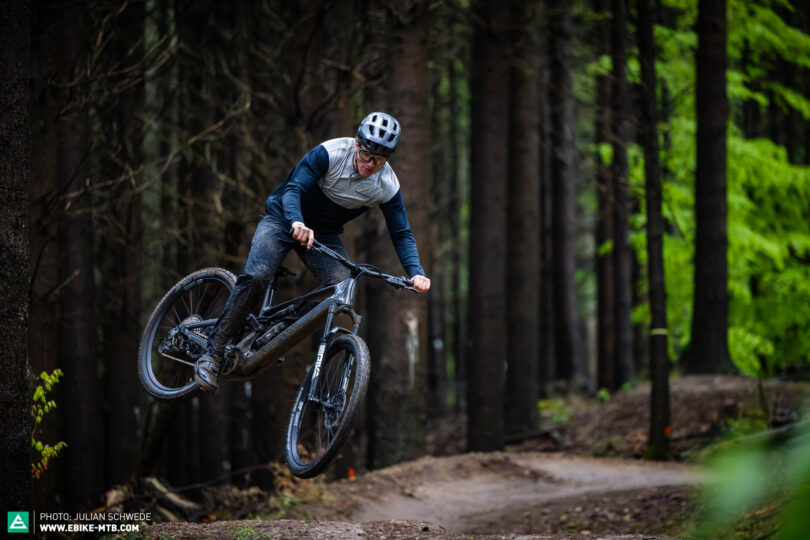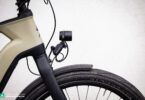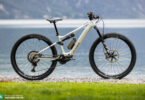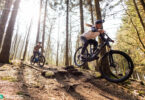It’s finally here, Canyon’s very first light eMTB! The Neuron:ONfly generates 140 mm of travel (f/r) and comes equipped with a Bosch Performance Line SX motor, powered by a 400 Wh battery. According to the German manufacturer, it’s the ultimate singletrack superhero, and was designed to combine epic trail expeditions with everyday riding scenarios. But can it deliver in real life?
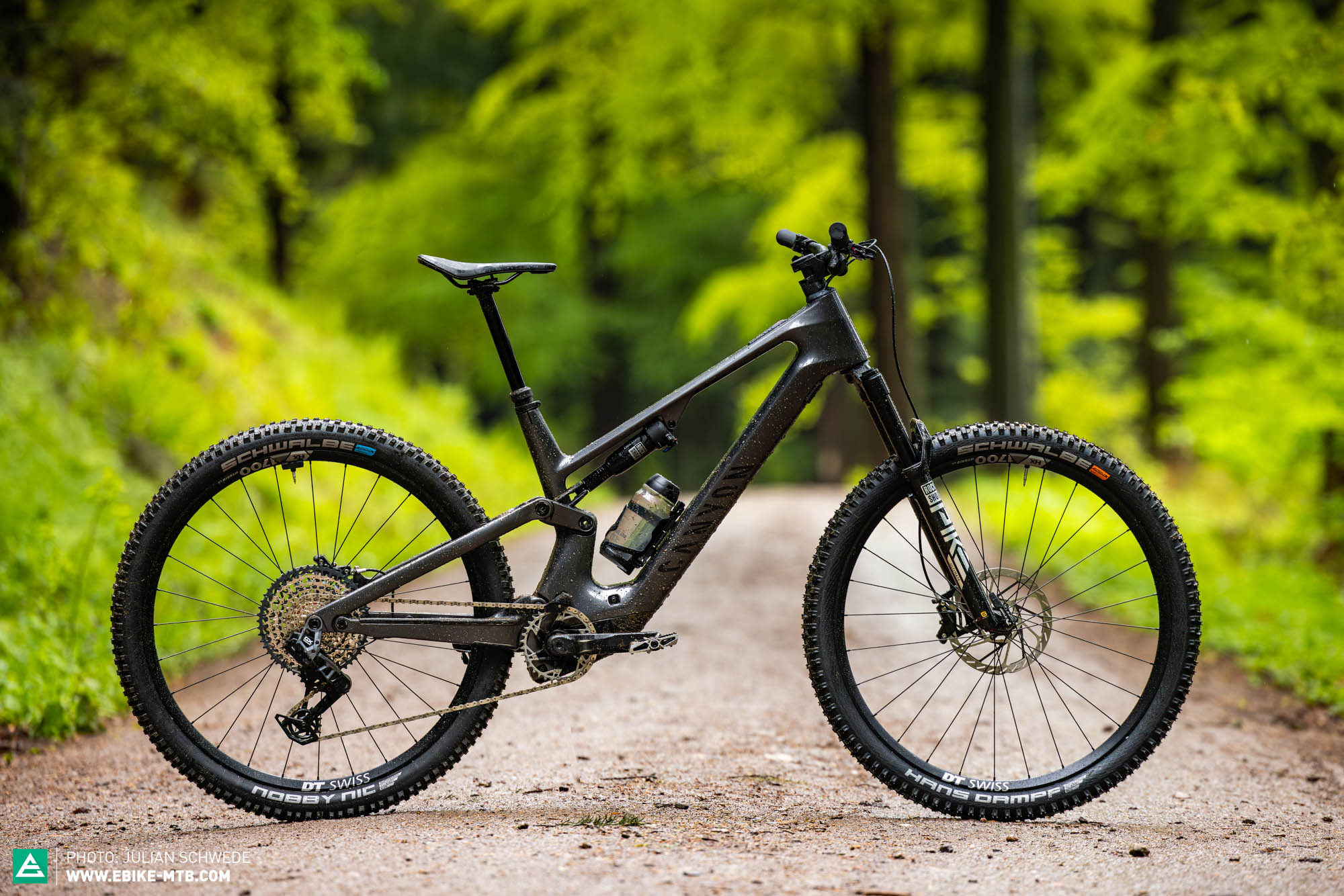
20.2 kg in size L | € 6,999 | Manufacturer’s website
The time many of us have been anxiously waiting for has finally arrived! Canyon have finally made their light eMTB debut. With the launch of the Neuron:ONfly, the German manufacturer is expanding the existing Neuron portfolio to bridge the gap between the analogue Neuron and the full-fat Canyon Neuron:ON, which relies on an 85 Nm Bosch Performance Line CX motor and a big 750 Wh battery. For their new light eMTB, Canyon opted for a Bosch Performance Line SX drive, which delivers 55 Nm of torque and draws its power from a 400 Wh battery. Like its bigger sibling, it generates 140 mm of travel (f/r) and rolls on 29″ wheels. All spec variants come standard with a carbon frame. The CF9 model we tested retails at € 6,999 and tips the scales at 20.2 kg in size L. Canyon describe the new Neuron:ONfly as a singletrack superhero, with a slightly sportier focus than its full-power counterpart. At the same time, it’s said to have maintained the distinctive all-round character of the Neuron range, so it should be great fun for everyday riding on local trails and on longer tours. We tested the Canyon Neuron:ONfly to find out what it can do.
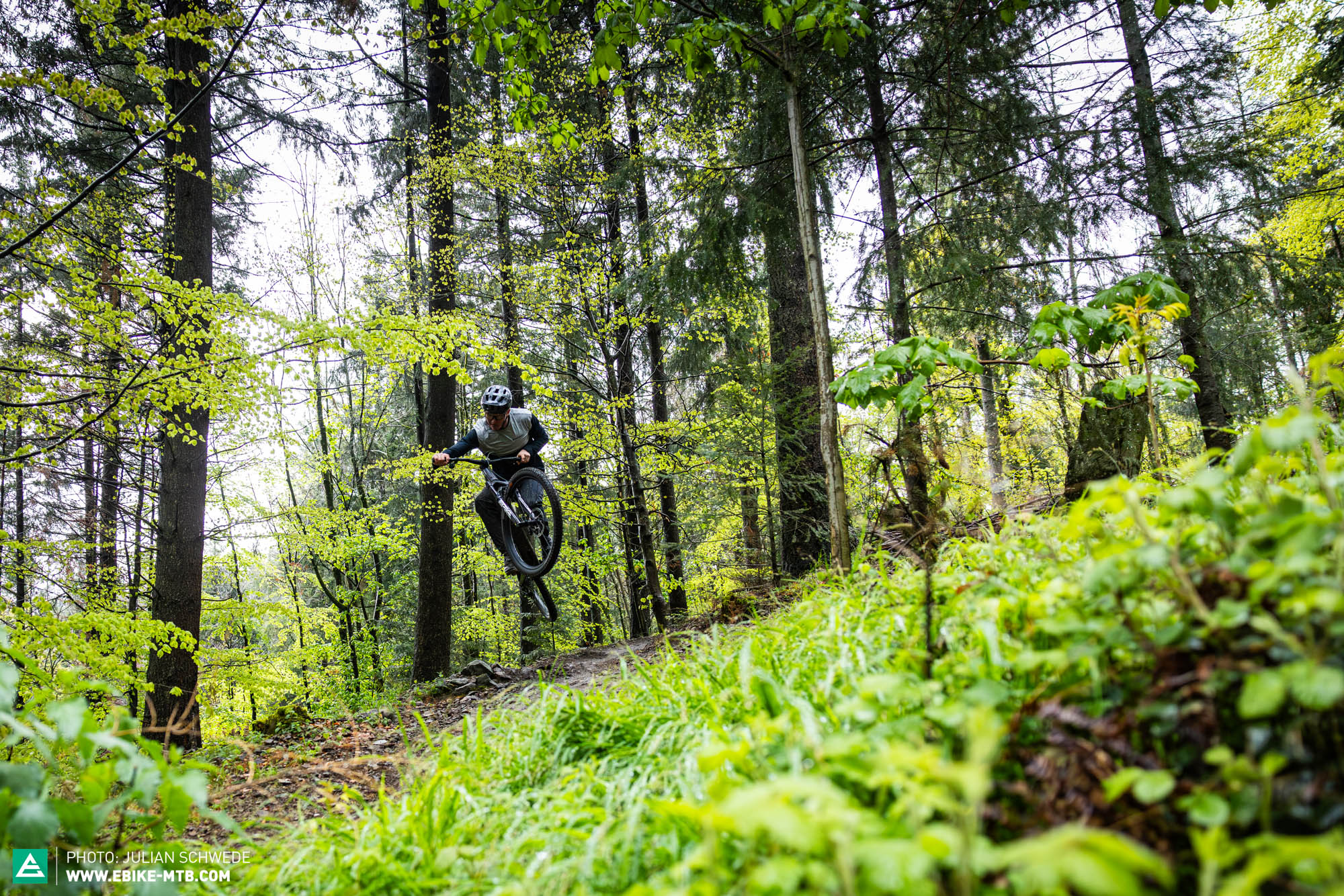
The new 2024 Canyon Neuron:ONfly in detail
At first glance, the Canyon Neuron:ONfly is hard to tell apart from its bigger sibling, the Neuron:ON. The carbon frame relies on a similar design language, with the shock positioned parallel to the top tube. Upon closer inspection, however, there are a few differences between the two bikes: the Neuron:ONfly has sharper edges, making for a slightly more modern, tidy look. The cables are routed internally and disappear into the frame through the headset, removing the need for conventional cable ports, adding to the overall clean look of the bike. That said, the internal headset routing can make servicing more fiddly and time-consuming. Even the seatpost clamp is integrated into the frame, ensuring a smooth transition from the frame to dropper post.
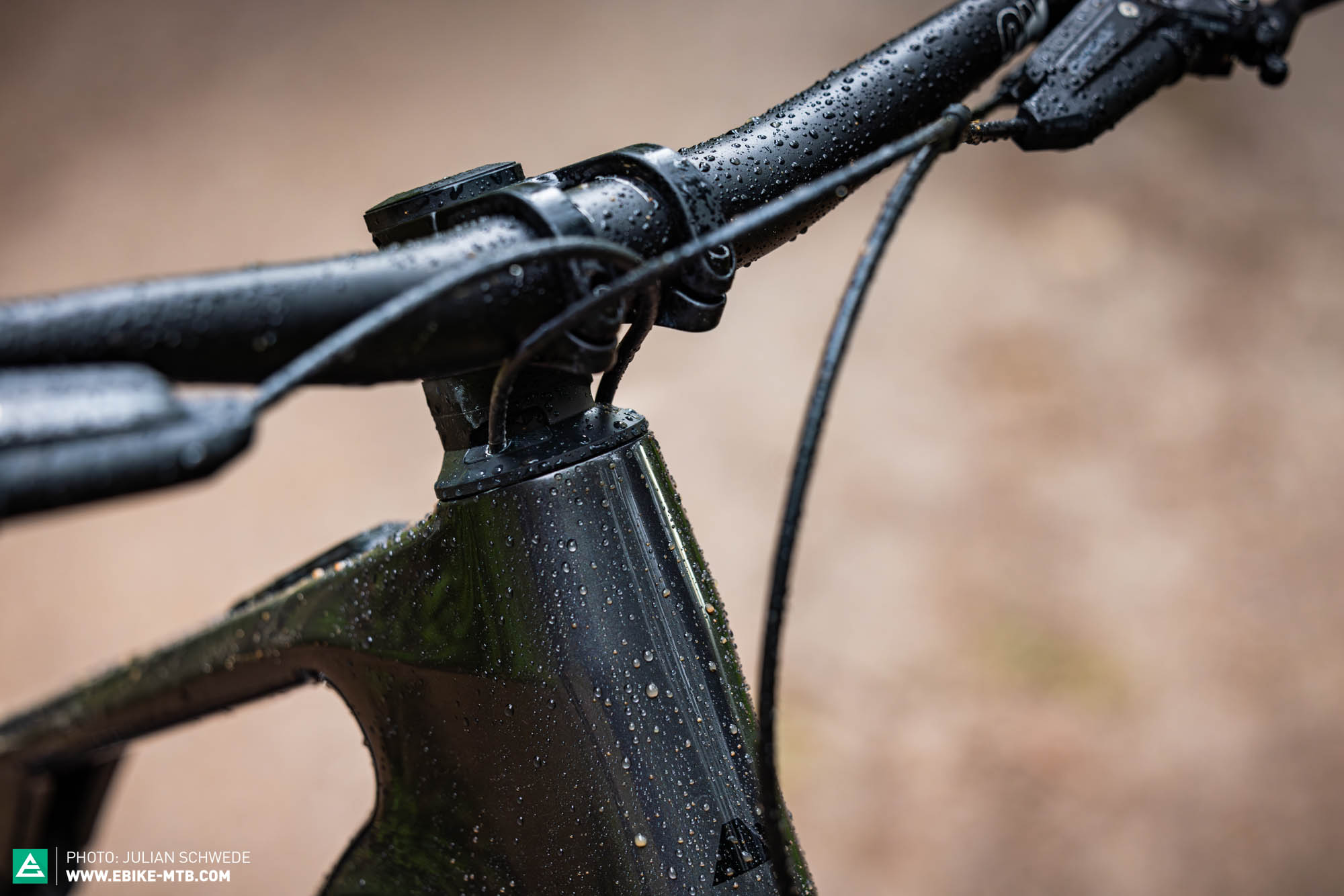
The compact motor system gives engineers more freedom with frame designs. Although the Bosch Performance Line SX motor, which delivers 55 Nm of torque and 600 watts of peak power, is still bulkier than the more compact TQ-HPR50 and FAZUA Ride 60 systems, it still harmonises beautifully with the frame silhouette. At the same time, the smaller, permanently integrated 400 Wh battery results in a slimmer down tube. While you can’t remove the battery for charging you can bump up the total capacity to 650 Wh using the optional 250 Wh PowerMore range extender, which can be attached to the bottle cage mounts and plugged into the charging port on the down tube. Only the smallest XS frame forgoes the range extender, because it’s too big for the frame. The charging port features a special cover, which was designed specifically for the Neuron:ONfly, that uses a sealed magnetic closure system to keep dirt out of the connector – and the look is high quality too!

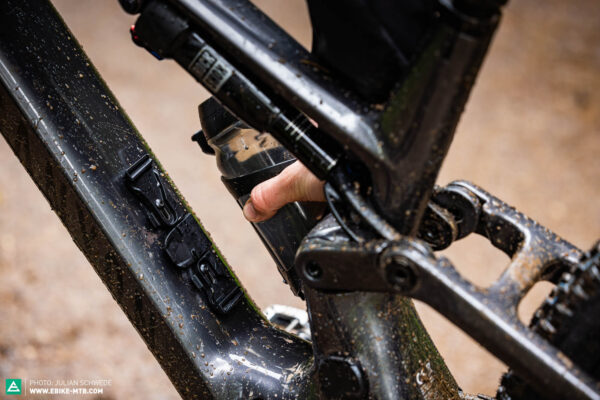
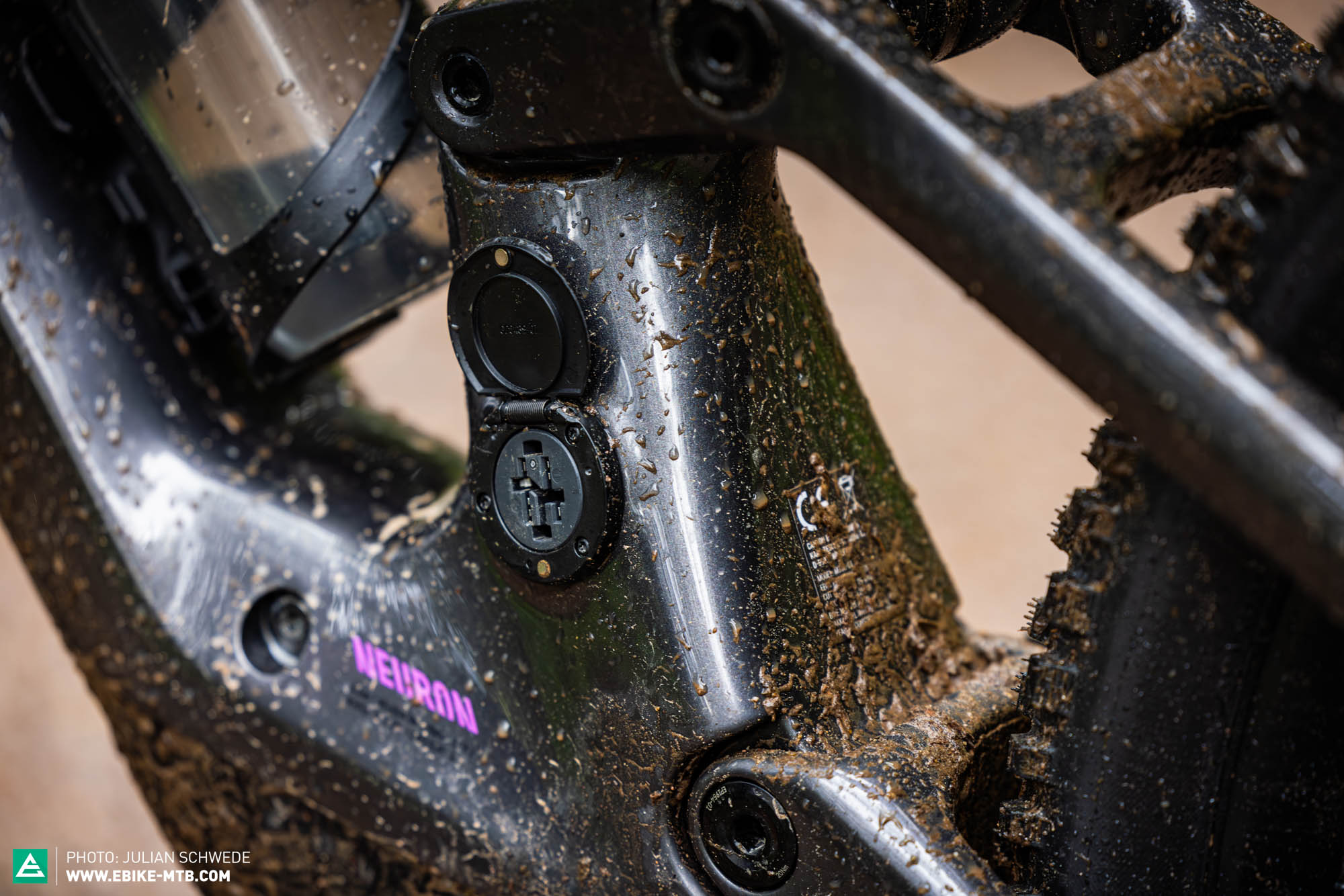
“Less is more” is likely to be the mantra Canyon’s developers followed while designing the Neuron:Onfly. The motor is paired with a wireless Bosch Mini Remote on the handlebars and minimalist Bosch System Controller in the top tube, which only shows basic riding data like battery charge status and current support mode. If you want more data, you can connect to the Bosch eBike Flow app using your smartphone. However, the minimalist approach fits in well with the bike’s sporty orientation and at the same time ensures a tidy cockpit. As far as connectivity goes, the Canyon Neuron:ONfly can be paired to the Bosch eBike Flow app, and also comes standard with the Bosch Connect module, which allows you to track your bike and switch on an alarm.
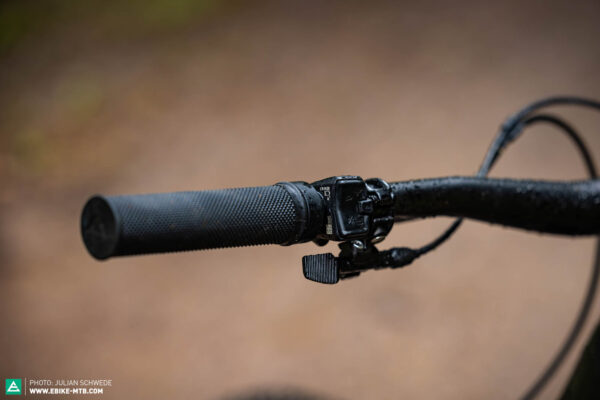

A skid plate protects the motor from nasty impacts while a generously sized seat and chainstay protector prevents chain slap and paint chips, backed by a chain guide to prevent the chain from falling off. The Neuron:ONfly comes standard with a protective film that protects the more vulnerable areas of the frame, like the down tube. Moreover, Canyon use rubber bump stops on the down tube, which prevent the fork crown from damaging the frame in the event of a crash.
The spec of our new 2024 Canyon Neuron:ONfly test bike
The Neuron:ONfly features a slightly more trail-oriented spec than its bigger brother, the Neuron:ON. The CF9 variant we tested comes equipped with RockShox suspension consisting of a Pike Ultimate fork and Deluxe Select+ air shock, both of which deliver easy adjustment and a tremendous performance out on the trail.
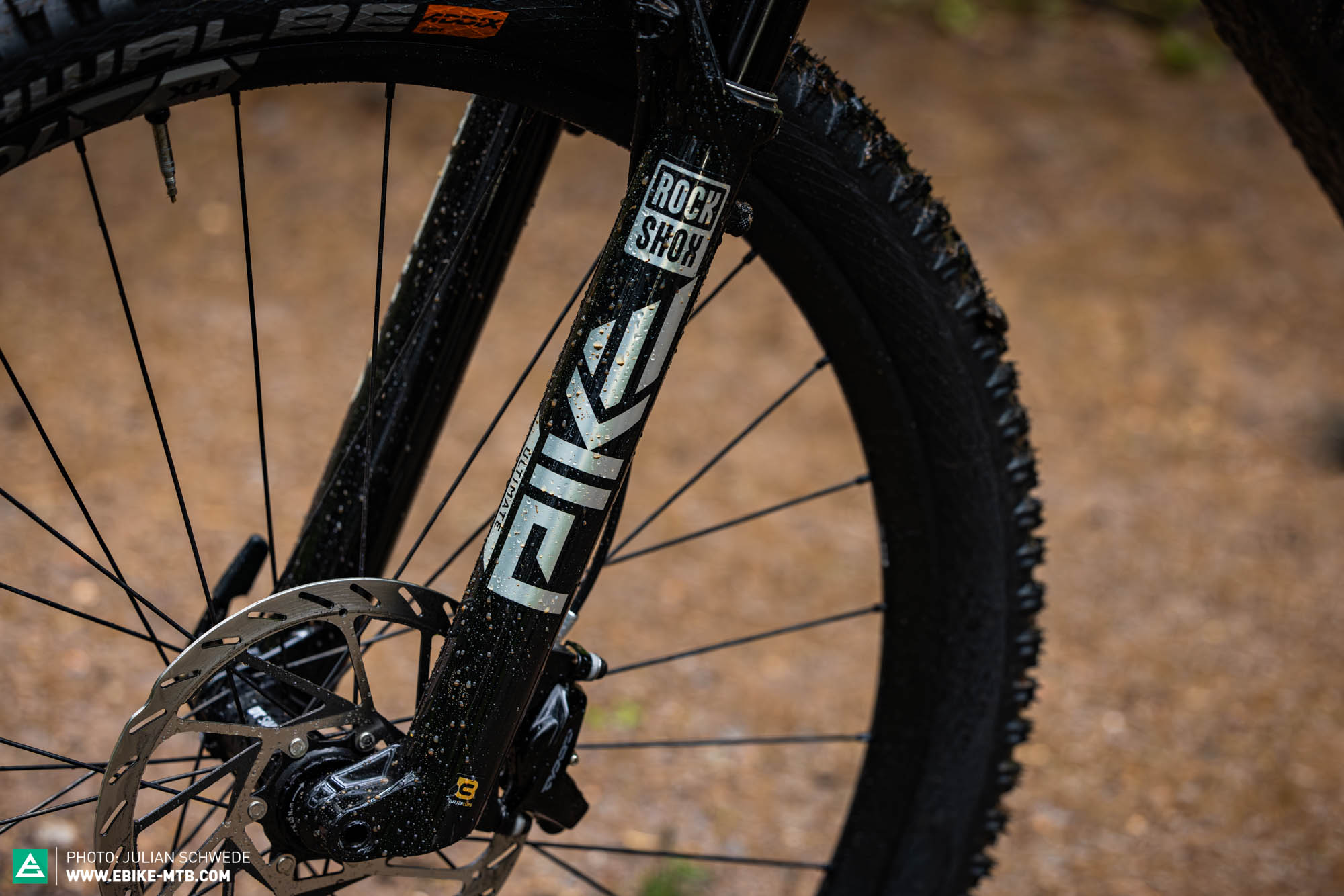
Canyon don’t compromise on the brakes either, speccing our test bike with powerful SRAM CODE Silver Stealth four-piston stoppers, which are paired with 200 mm rotors front and rear. Shifting is taken care of by a robust SRAM GX Eagle Transmission drivetrain, which relies on a direct-mount rear derailleur and ensures butter-smooth shifting. The rear derailleur draws its power directly from the bike’s main battery, so there’s no need to recharge an additional AXS battery – cool! Canyon’s in-house cable operated G5 dropper post offers 200 mm of travel (frame sizes M and L), ensuring plenty of freedom on the trail. The German manufacturer also relies on its in-house components for the cockpit, combining a 50 mm G5 stem and 780 mm G5 alloy handlebars. That said, the German manufacturer adapts the handlebar width to the frame size, something which makes total sense, but unfortunately isn’t that common amongst bike brands yet!
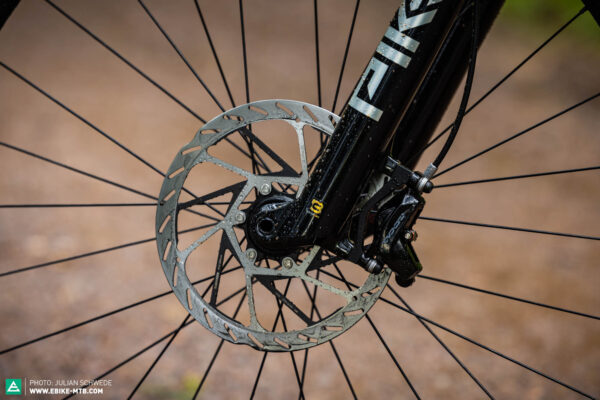
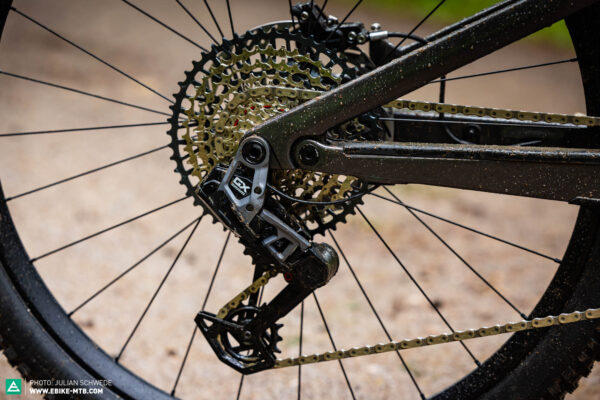

For the wheels, the German manufacturer relies on DT Swiss HX 1700 Hybrid LS alloy wheels and Schwalbe tires, combining a Hans Dampf in the soft rubber compound at the front and a Nobby Nic in the harder Speedgrip compound at the rear. While this combination works fine on moderate, flowing trails in dry conditions, they quickly reach their limits in wet and technical terrain. If you tend to ride a lot on technical terrain with rocks and roots, we recommend upgrading to a more aggressive tire combo, like Schwalbe’s Magic Mary and Big Betty, for example.
Tuning tip: Tires with more aggressive profile and tougher casing

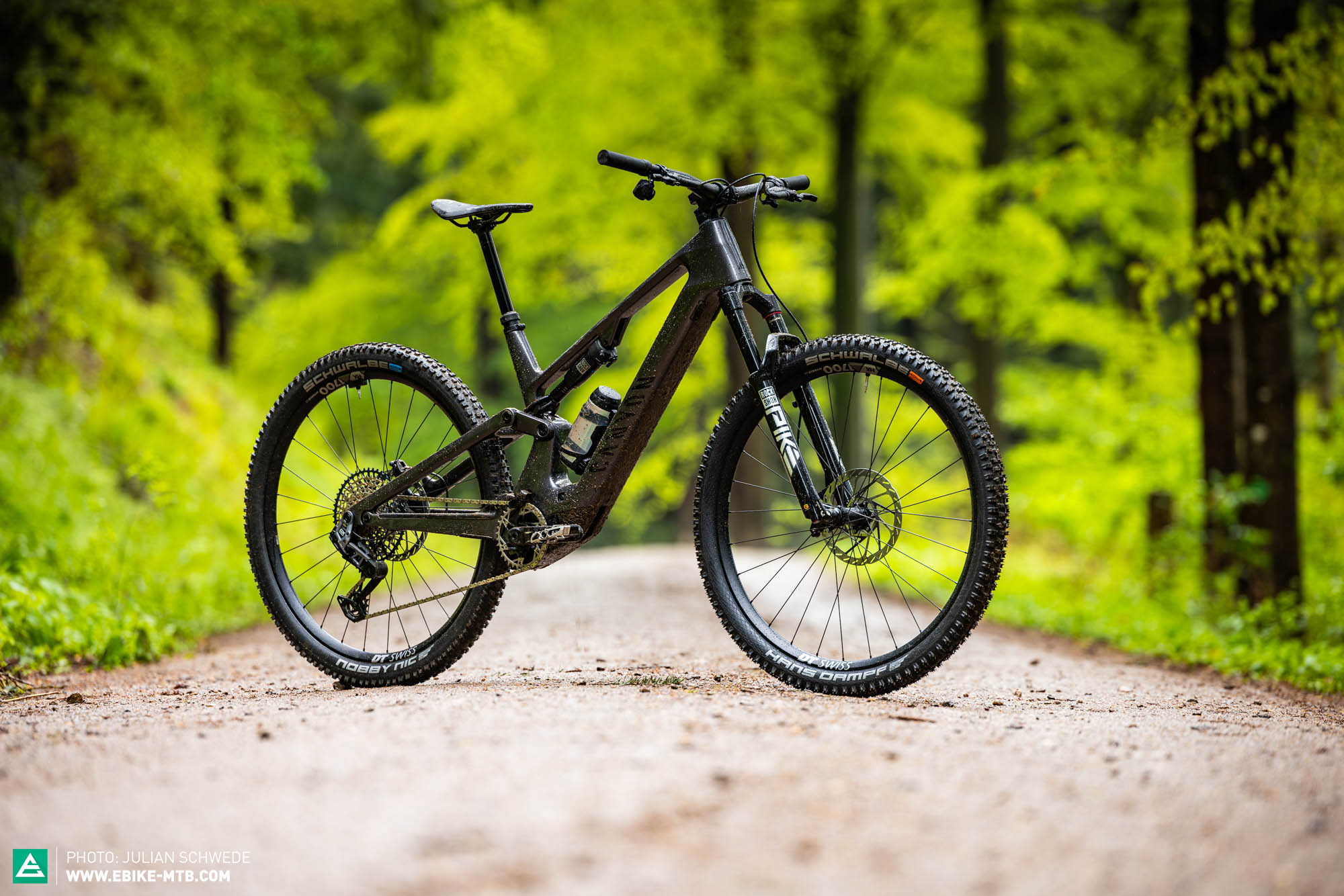
Canyon Neuron:ONfly CF9
€ 6,999
Specifications
Motor Bosch Performance Line SX 55 Nm
Battery Bosch PowerTube 400 Wh
Display Bosch System Controller
Fork RockShox Pike Ultimate 140 mm
Rear Shock RockShox Deluxe Select+ 140 mm
Seatpost Canyon G5 200 mm
Brakes SRAM CODE Silver Stealth 200/200 mm
Drivetrain SRAM GX AXS Eagle Transmission 1x12
Stem Canyon G5 50 mm
Handlebar Canyon G5 780 mm
Wheelset DT Swiss HX1700 Hybrid LS 29"
Tires Schwalbe Hans Dampf, Super Trail, Soft/ Nobby Nic, Super Trail, Speedgrip 2.35"/2.4"
Technical Data
Size XS S M L XL
Weight 20.2 kg
Perm. total weight 130 kg
Max. payload (rider/equipment) 110 kg
Trailer approval no
Kickstand mount no
Specific Features
range extender
Spec variants and models of the new 2024 Canyon Neuron:ONfly
The Canyon Neuron:ONfly is available in 4 different versions, all of which rely on a full carbon frame and Bosch Performance Line SX motor.
Retailing at € 4,849, the CF7 model is the gateway to the Neuron:ONfly dimension. For your money, you’ll get a RockShox Pike Base fork and Deluxe Select+ shock. Shifting is taken care of by a cable-operated Shimano DEORE drivetrain. while SRAM CODE R four-piston brakes do stopping duties. With the CF7, Canyon want to offer an attractive package for cyclescheme buyers, charging under €5,000 for the bike, packaging and lock.
Just above it sits the CF8, which costs € 5,599 and comes equipped with FOX suspension consisting of a 34 performance fork and FLOAT DPS performance shock. A Shimano XT drivetrain ensures precise shifting while four-piston XT brakes provide reliable and powerful deceleration
The limited edition CF LTD flagship model sets you back € 7,999 and relies on some of the finest components, including bling FOX Factory suspension with fancy Kashima coating, an electronic SRAM XX Eagle Transmission drivetrain and powerful SRAM CODE Ultimate Stealth four-piston brakes, all rounded off with a classy Reynolds carbon wheelset.
The geometry of the new 2024 Canyon Neuron:ONfly
The Canyon Neuron:ONfly is available in 5 sizes, XS to XL, providing a suitable option for riders between 158 and 200 cm tall. The smallest XS size generates 130 mm of travel rather than 140 mm. Compared to the full-power Neuron:ON, the Neuron:ONfly has a slightly sportier geometry, with the slacker 64.5° head tube angle favouring aggressive riding. The 485 mm reach is rather long for a bike in size L, and the seat tube isn’t short either – but it doesn’t restrict freedom of movement on the trail. Chainstays are 450 mm across the board and don’t grow with the frame size.
| Size | XS | S | M | L | XL |
|---|---|---|---|---|---|
| Top tube | 556 mm | 585 mm | 612 mm | 640 mm | 667 mm |
| Seat tube | 392 mm | 405 mm | 415 mm | 445 mm | 455 mm |
| Head tube | 110 mm | 120 mm | 130 mm | 140 mm | 150 mm |
| Head angle | 64.5° | 64.5° | 64.5° | 64.5° | 64.5° |
| Seat angle | 76.5° | 76.5° | 76.5° | 76.5° | 76.5° |
| Chainstay | 450 mm | 450 mm | 450 mm | 450 mm | 450 mm |
| BB Drop | 35.5 mm | 35.5 mm | 35.5 mm | 35.5 mm | 35,5 mm |
| Wheelbase | 1,179 mm | 1,213 mm | 1,142 mm | 1,271 mm | 1,301 mm |
| Reach | 410 mm | 435 mm | 460 mm | 485 mm | 510 mm |
| Stack | 608 mm | 526 mm | 635 mm | 644 mm | 652 mm |

The new 2024 Canyon Neuron:ONfly on the trail
When you swing your leg over the saddle, the Canyon Neuron:ONfly places you in an upright pedalling position, which puts a slight pressure on your hands on level ground. As the gradient steepens, you don’t have to actively weight the front wheel to keep it tracking, and even steeper climbs are not a problem. On technical uphills, the rear suspension generates good traction, negotiating steps and ledges with great sensitivity. When things get slippery, the rear tire quickly reaches its limit, struggling to transfer the power of the motor to the ground. Overall, the Bosch Performance Line SX drive is the most powerful option amongst the light motors. With a sporty riding style and high pedalling cadence, you can unlock the maximum power to keep up with full-power eMTBs.
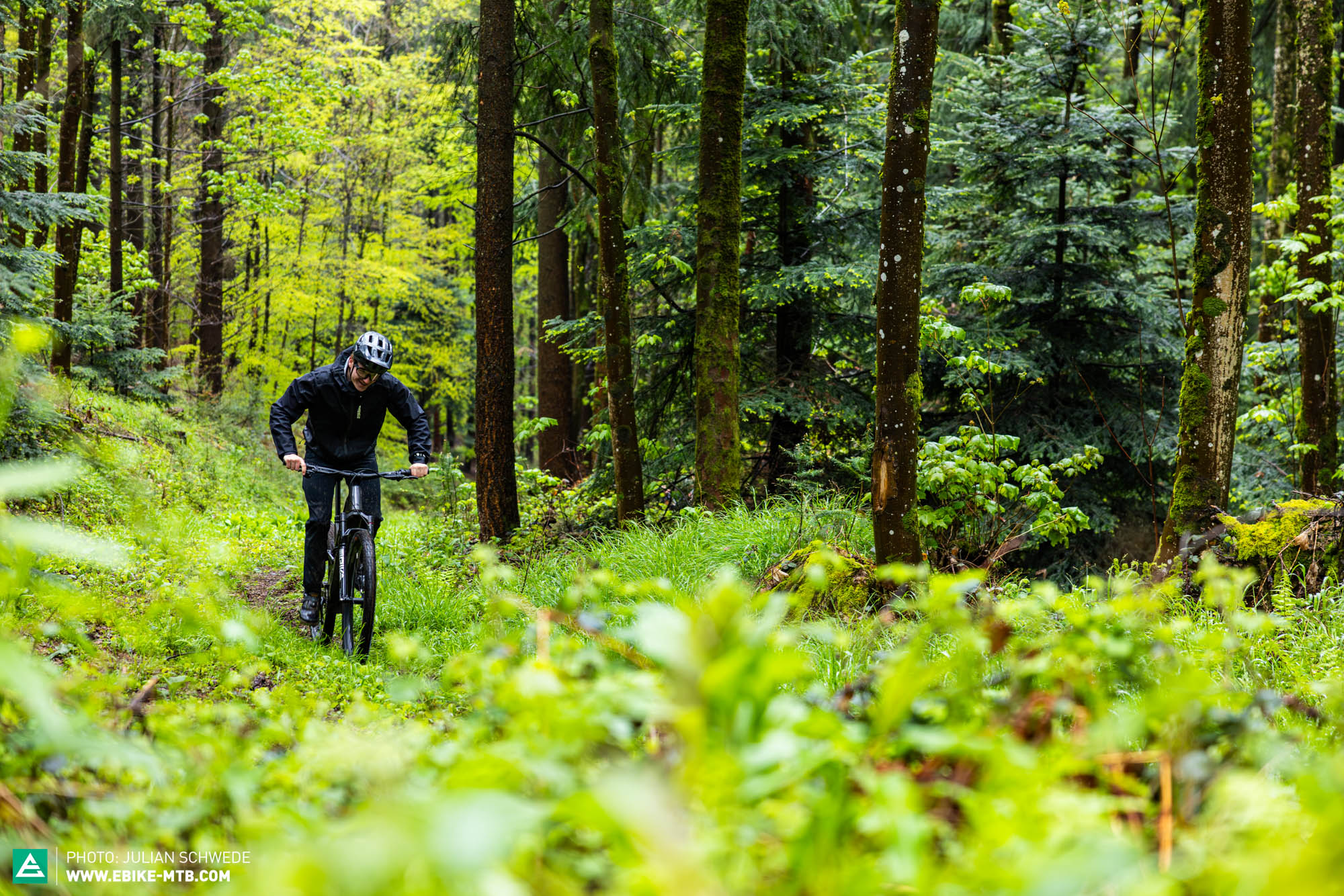
When gravity takes over, Canyon Neuron:ONfly integrates you nicely between its wheels, which makes it easy to control and makes you feel at ease from the get go. Especially on flowing trails, it’s tons of fun to ride, slapping a massive grin on your face in the process. With its playful character, it encourages you to play with the trail features, converting the smallest kicker into a launch pad. The firm suspension allows you to generate speed by pumping through rollers, and carve through berms at Mach 10. The Neuron:ONfly implements steering input willingly and precisely, making it easy to follow the line you pictured in your head and to negotiate tight hairpin corners on technical singletracks that require a precise riding style. When charging through rough root carpets or hitting a bigger rock, the suspension works efficiently and absorbs the impact with great composure. However, when the going gets rougher, the Canyon Neuron:ONfly reaches its limits, requiring a vigilant riding style to negotiate nasty rock gardens and steep off-camber sections. The agile handling enables quick direction changes and provides shed loads of fun, while the firm suspension provides direct feedback, which makes for an engaging ride for experienced riders. If you spend most of your time on technical trails, we recommend upgrading the shallow-profield Schwalbe Hans Dampf/Nobby Nic tires with a more aggressive combo. However, if you wants to squeeze the last drop of juice out of your battery and tend to stick to leisurely tours with minimal trail riding, the standard tires are a good choice.
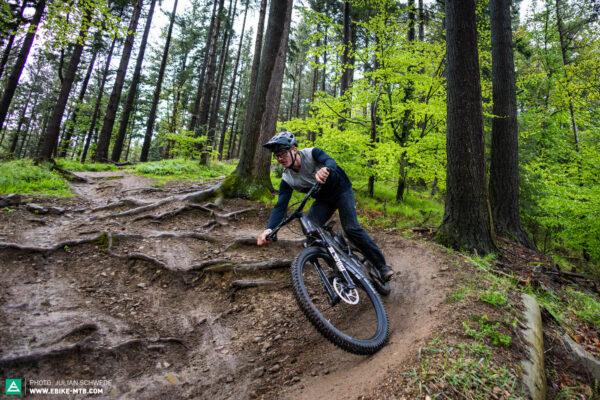

Who should take a closer look at the new 2024 Canyon Neuron:ONfly?
The Canyon Neuron:ONfly appeals primarily to sporty trail riders and tourers who are looking for a fun e-mountainbike for flowing and moderate trails, where both beginners and advanced riders will thoroughly enjoy it! When the trail gets rougher, the Canyon requires good skills and a vigilant riding style.
Our conclusions about the 2024 Canyon Neuron:ONfly
With the Neuron:ONfly, Canyon have made a successful Light eMTB debut! The new Neuron:ONfly features a modern design language, beautiful frame details and stylish motor integration. On the trail, it scores with an agile ride and playful character, especially on flow trails, while the tires slow it down a little on more technical terrain. The upright pedalling position also makes it a good touring companion for sporty riders.
Tops
- Beautiful motor integration
- Agile handling on flow trails
- Clean look
Flops
- Tires limit the bike’s potential
- Demanding handling on technical trails
For more info, visit canyon.com

Did you enjoy this article? If so, we would be stoked if you decide to support us with a monthly contribution. By becoming a supporter of E-MOUNTAINBIKE, you will help secure a sustainable future for high-quality cycling journalism. Click here to learn more.
Words: Mike Hunger Photos: Julian Schwede






